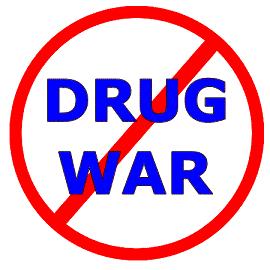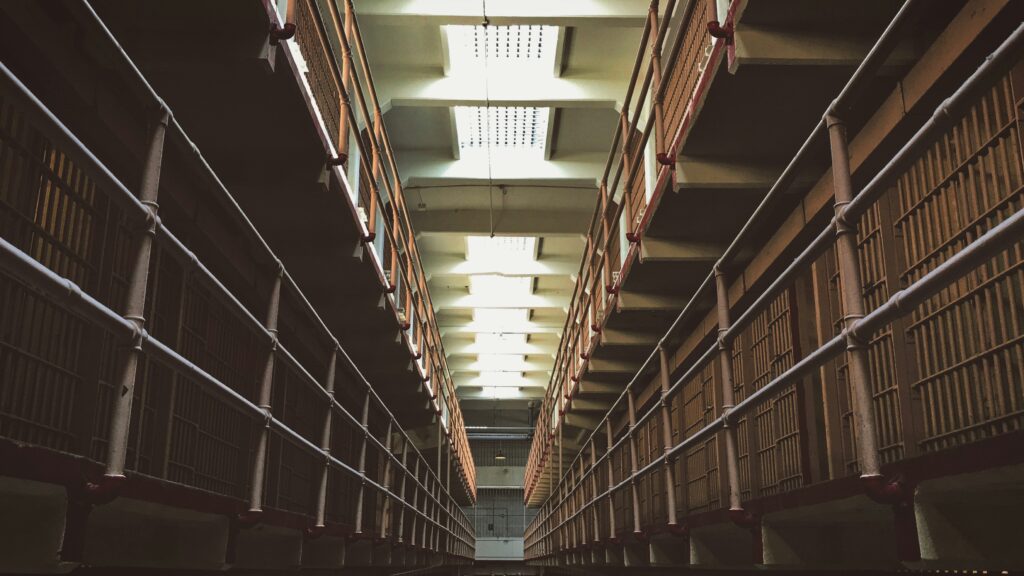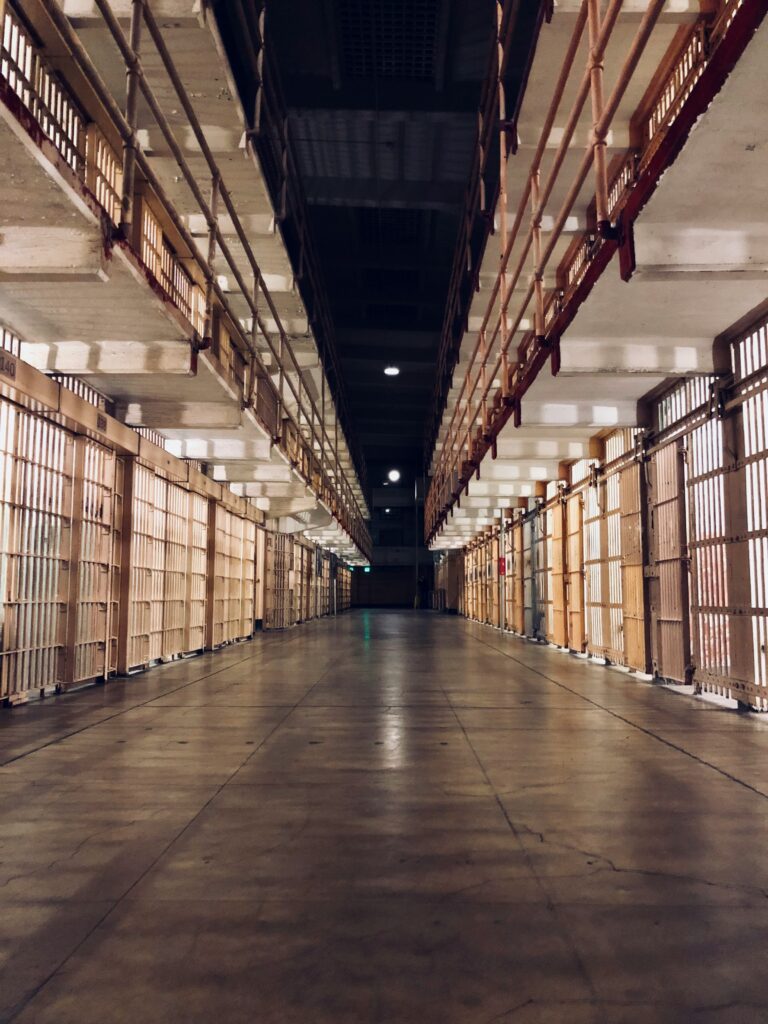Top 10 World Drug Stories Of 2011
By Phillip Smith
The new year is almost upon us and 2011 will soon be a year for the history books. But we can’t let it go without recognizing the biggest global drug policy stories of the year. From the horrors of the Mexican drug wars to the growing clamor over the failures of prohibition, from the poppy fields of Afghanistan and the Golden Triangle to the coca fields of the Andes, from European parliaments to Iranian gallows, drug prohibition and its consequences were big news this year.
Of course, we can’t cover it all. We have no room to note the the emergence of West Africa as a transshipment point for South American cocaine bound for Europe’s booming user markets, nor the unavailability of opioid pain medications in much of the world; we’ve given short shrift to the horrors of “drug treatment” in Southeast Asia; and we’ve barely mentioned the rising popularity of synthetic stimulants in European club scenes, among other drug policy-related issues. We’ll be keeping an eye on all of those, but in the meantime, here are our choices for this year’s most important global drug policy stories:
The Mexican Drug Wars
This month marks the fifth anniversary of Mexican President Felipe Calderon’s declaration of war on his country’s drug trafficking organizations — the so-called cartels — and five years in, his policy can only be described as a bloody disaster. The death toll stands at somewhere around 45,000 since Calderon sent in the army and the federal police, but that figure doesn’t begin to describe the horror of the drug wars, with their gruesome brutality and exemplary violence.
Mexico’s drug wars pit the army and the state and federal police against the cartels, the cartels against each other, and different factions of state, local, and federal police, and even different military commands, aligned with various cartels fighting each other in a multi-sided dance of death. All the violence and corruption has had a corrosive effect on Mexicans’ perceptions of personal and public safety and security, as well as on its political system.
 It has also tarnished the reputation of the Mexican military. After a two-year investigation, Human Rights Watch reported last month credible evidence that the security forces, led by the military, were responsible for 170 cases of torture, 39 disappearances and 24 extrajudicial killings in the five states they studied.
It has also tarnished the reputation of the Mexican military. After a two-year investigation, Human Rights Watch reported last month credible evidence that the security forces, led by the military, were responsible for 170 cases of torture, 39 disappearances and 24 extrajudicial killings in the five states they studied.
And, as the cartels battle each other, the military, and the various police, the violence that was once limited to a handful of border cities has spread to cities across the country. Once relatively peaceful Acapulco has been wracked by cartel violence, and this year, both Veracruz and Monterrey, cities once unaffected by the drug wars, have seen murderous acts of spectacular violence.
Meanwhile, business continues as usual, with drugs flowing north across the US border and voluminous amounts of cash and guns flowing south. Calderon’s drug war, which has racked up a $43 billion bill so far (and an additional nearly one billion in US Plan Merida aid), has managed to kill or capture dozens of cartel capos, but has had no discernable impact on the provision of drugs across the border to feed America’s voracious appetite. Worse, the attempted crackdown on the cartels has led them to expand their operations to neighboring Central American countries where the state is even weaker than in Mexico. Both Guatemala and Honduras have seen significant acts of violence attributed to the cartels this year, while El Salvador and Nicaragua also complain of the increasing presence of Mexican drug trafficking organizations.
There are, however, a couple of positives to report. First, the carnage may have peaked, or at least reached a plateau. It now appears that the death toll this year, while tremendously high at around 13,000 so far, will not exceed last year’s 15,000. That would mark the first downturn in the killing since Calderon called out the troops.
Second, the bloody failure of Calderon’s drug war is energizing domestic Mexican as well as international calls to end drug prohibition. A strong civil society movement against the drug war and violence has emerged in Mexico and, sadly, the sorrow of Mexico is now Exhibit #1 for critics of drug prohibition around the world.
Afghanistan: Still the World’s Drug Crop Capital
A decade after the US invaded Afghanistan in a bid to decapitate Al Qaeda and punish the Taliban, the US and NATO occupation drags bloodily on, even as it begins to wind down. And Afghanistan’s status as the world’s number one opium poppy producer remains unchallenged. In a Faustian bargain, the West has found itself forced to accept widespread opium production as the price of keeping the peasantry out of Taliban ranks while at the same time acknowledging that the profits from the poppies end up as shiny new weapons used to kill Western soldiers and their Afghan allies.
The Afghan poppy crop was down last year, not because of successful eradication programs, but because a fungus blighted much of the crop. This year, the UN Office on Drugs and Crime reported that the area under poppy cultivation increased 7%, but that the expected harvest increased 61% because of better yields and would produce about 5,800 metric tons of opium.
Last year’s blight-related poppy shortage led to price increases, which encouraged farmers to plant more poppy and more than doubled the farm-gate value of the crop from $605 million to more than $1.4 billion. Additional hundreds of millions go to traders and traffickers, some linked to the Taliban, others linked to government officials. This year, US and NATO forces embarked on counter-drug operations aimed at traders and traffickers, but only those linked to the Taliban.
And it’s not just opium. According to the UNODC World Drug Report 2011, Afghanistan is also “among the significant cannabis resin producing countries,” producing somewhere between 1,500 and 3,500 metric tons of hash in 2010, with no reason to think it has changed dramatically this year. That brings in somewhere between $85 million and $265 million at the farm gate.
A decade after the US invasion, Afghanistan remains the world’s largest opium producer by far and possibly the world’s largest cannabis producer. Given the crucial role these drug crops play in the Afghan economy, there is little reason to think anything is going to change anytime soon.
The Return of the Golden Triangle
In last year’s roundup of major international drug stories, we mentioned the reemergence of opium production in Southeast Asia’s Golden Triangle. This year, production has accelerated. According to the UNODC’s Southeast Asia Opium Survey 2011, opium production has been increasing since 2006, but jumped 16% this year.
The region produced an estimated 638 metric tons this year, of which 91% came from Myanmar, with Laos and Thailand producing the rest. The region is now responsible for about 12% of annual global opium production.
The amount of land under poppy cultivation is still only one-third of what it was at its 1998 peak, but has more than doubled from its low point of 20,000 hectares in 2006. More importantly, estimated total production has rebounded and is now nearly half of what it was in 1998. The UNODC points a finger at chronic food insecurity, weak national governments, and the involvement of government actors, especially in Myanmar.
If Afghanistan does not produce enough opium to satisfy global illicit demand, the countries on the Golden Triangle are standing in the wings, ready to make up the difference.
 The Rising Clamor for Legalization
The Rising Clamor for Legalization
2011 saw calls for ending drug prohibition growing ever louder and coming from ever more corners of the world. Throughout the year, Latin American leaders, such as Colombian President Juan Manuel Santos and former Mexican President Vicente Fox, have called repeatedly for drug legalization, or at least a serious discussion of it. Although the specifics of their remarks shift over time — sometimes it’s a call for drug legalization, sometimes for marijuana legalization, sometimes for decriminalization — leaders like Fox and Santos are issuing a clarion call for fundamental change in global drug policies.
That such calls should come from leaders in Colombia and Mexico is no surprise — those are two of the countries most ravaged by drug prohibition and the violence it fuels. By the fall, even current Mexican President Felipe Calderon, who unleashed Mexico’s drug war five years ago, was starting to join the chorus. In an October interview with Time magazine, Calderon said he could never win in Mexico if Americans don’t reduce demand or “reduce at least the profits coming from the black market for drugs.” While he was unwilling to take the final step and embrace ending prohibition, he added that “I want to see a serious analysis of the alternatives, and one alternative is to explore the different legal regimes about drugs.”
But the biggest news in the international battle to end drug prohibition came at mid-year, when the Global Commission on Drug Policy, a star-studded panel of former presidents and prime ministers, public intellectuals, and business magnates, called the global war on drugs “a failure” and urged governments worldwide to should shift from repressive, law-enforcement centered policies to new ways of legalizing and regulating drugs, especially marijuana, as a means of reducing harm to individuals and society, in a report that drew press attention from around the world.
The commission, heavily salted with Latin American luminaries, grew out of the previous year’s Latin American Initiative on Drug Policy and includes some of the same members, including former Brazilian President Henry Cardoso and former Mexican President Ernesto Zedillo. It is paired with the UK-based Beckley Foundation’s Global Initiative for Drug Policy Reform, which launched in November and is eyeing changes in the legal backbone of international drug prohibition, the UN 1961 Single Convention on Narcotic Drugs and its successor treaties. The global commission also picked up strong support from an organization of Latin American judicial figures, Latin Judges on Drugs and Human Rights, which echoed the commission’s call with its own Rome Declaration.
European Reforms
Drug reform continued its achingly slow progress in Europe this year, with a handful of real advances, as well as a number of parties in various countries taking strong drug reform stands. But while Europe has largely embraced harm reduction and seen the positive results of Portugal’s decade-long experiment with drug decriminalization, getting to the take level — ending drug prohibition — remains elusive.
In March, Scotland’s Liberal Democrats voted to making campaigning for heroin maintenance treatment part of their party platform. Heroin users should not be fined or imprisoned, but should be given the drug through the National Health Service, party members agreed.
In September, their more powerful brethren, the British Liberal Democrats, who are junior partners with the Conservatives in the governing coalition, did them one better by adopting a resolution supporting the decriminalization of drug possession and the regulated distribution of marijuana and calling for an “impact assessment” of the 1971 Misuse of Drugs Act that would provide a venue for considering decriminalization and controlled marijuana sales. That is going to lead to debate in parliament on the issue next year.
I n August, the Greek government proposed drug decriminalization in a bill sent to parliament by Justice Minister Miltadis Papioannou. Under the proposed bill, drug possession for personal use would qualify only as “misconduct” instead of a more serious criminal offense. The bill would also guarantee the right to drug treatment, including for people currently imprisoned. People deemed “addict offenders” by the courts would be provided treatment instead of being jailed. But given the other pressing matters before the Greek government, the bill has yet to move.
n August, the Greek government proposed drug decriminalization in a bill sent to parliament by Justice Minister Miltadis Papioannou. Under the proposed bill, drug possession for personal use would qualify only as “misconduct” instead of a more serious criminal offense. The bill would also guarantee the right to drug treatment, including for people currently imprisoned. People deemed “addict offenders” by the courts would be provided treatment instead of being jailed. But given the other pressing matters before the Greek government, the bill has yet to move.
Probably the most significant actual drug reform achievement in Europe this year was Poland’s passage of a law that allows prosecutors to divert drug users into treatment instead of prison. That law went into effect earlier this month. The new law lets prosecutors bypass the courts in a “treat, not punish” approach to drug use when confronted with people arrested in possession of small amounts of drugs. A person arrested with personal use quantities of drugs can now be immediately referred to a therapist, and prosecutors are compelled to gather information on the extent of the person’s drug problem. Still, there is an appetite for more reform; a political party that wants legalize soft drugs won 10% of the vote in the October presidential elections.
There has been some movement on marijuana and hints of more to come, as well this year. In an otherwise dismal year for weed in the Netherlands (see below), the Dutch high court ruled in April that anyone can grow up to five pot plants without facing criminal charges, no matter how big the harvest. The ruling came after prosecutors went after two different people who produced large multi-pound yields from a handful of plants, arguing that such harvests violated the Dutch five-gram rule. The court disagreed, but said that the pot would have to be turned over to police if they came to the door.
In June, Italy’s top court ruled that balcony pot grows are okay, finding that the amounts of pot produced in such grows “could cause no harm.” It’s a small advance on earlier court rulings, and a step in the right direction.
And then there are moves that are pushing the envelope. Last month, the Copenhagen city council voted to explore how best to legalize and regulate pot sales. The move has the support of the mayor, but has to be approved by the Danish parliament, which has balked at such measures before. Maybe this time will be different. And raising the ante, the Basque parliament is set to approve a new drug law that will regulate marijuana cultivation, distribution, and consumption. The move is being propelled by the health ministry in the autonomous region of Spain, and would be a direct challenge to the UN conventions’ ban on legalization.
Medical Marijuana’s Slowly Growing Global Acceptance
 In Israel, the Cabinet approved guidelines in August that will govern the supply of marijuana for medical and research purposes. In so doing, it explicitly agreed that marijuana does indeed have medical uses. The move came on the heels of a Health Ministry decision the week before to deal with supply problems by setting up a unit within the department to grow medical marijuana. That unit will begin operating in January 2012. Currently, medical marijuana is supplied by private Israeli growers, but with the number of medical marijuana patients expected to rise from the current 6,000 to 40,000 by 2016, the state is stepping in to help out with supply.
In Israel, the Cabinet approved guidelines in August that will govern the supply of marijuana for medical and research purposes. In so doing, it explicitly agreed that marijuana does indeed have medical uses. The move came on the heels of a Health Ministry decision the week before to deal with supply problems by setting up a unit within the department to grow medical marijuana. That unit will begin operating in January 2012. Currently, medical marijuana is supplied by private Israeli growers, but with the number of medical marijuana patients expected to rise from the current 6,000 to 40,000 by 2016, the state is stepping in to help out with supply.
In the Czech Republic, the Ministry of Health said in September it plans to remove marijuana from its list of proscribed substances and allow it to be prescribed by doctors. The ministry said it would move to amend Czech drug laws by the end of this year to allow for the prescription of marijuana by doctors, although we haven’t seen that actually happen yet. The ministry must also determine what sort of distribution system to set up. The Israeli model, where the state is licensing medical marijuana farms, is one oft-cited system.
In New Zealand, medical marijuana was on the agenda of the New Zealand Law Commission when it issued a report in May reviewing the country’s drug laws. In addition to other drug reform measures, the commission called for clinical trials on medical marijuana “as soon as practicable” and said medical marijuana patients should not be arrested in the meantime. “Given the strong belief of those who already use cannabis for medicinal purposes that it is an effective form of pain relief with fewer harmful side effects than other legally available drugs, we think that the proper moral position is to promote clinical trials as soon as practicable. We recommend that the government consider doing this.” The government there does not appear to be eager to follow those recommendations, but the commission report is laying the groundwork for progress.
In Canada, which has an existing medical marijuana program, the news is more mixed. Health Canada is in the process of adopting a “more traditional regulatory role” for the medical marijuana “marketplace, and envisions privatized medical marijuana provision by licensed and strictly regulated grower. That doesn’t sit well with a lot of patients and activists because it means Health Canada wants to eliminate patients’ ability to grow their own. Nor were patients particularly impressed with Health Canada’s earlier attempt to provide privately produced and licensed medical marijuana. Without outright legalization of marijuana being more popular than the Conservative government, Canada may eventually get around to solving its medical marijuana problem by just legalizing it all.
Iran’s Drug War Execution Frenzy
Iran has garnered itself a well-deserved reputation as one of the world’s leading practitioners of the death penalty, but 2011 saw an absolute explosion of death sentences and executions — the vast majority of them for drug offenses. At the end of January, we reported that Iran had already executed 56 drug offenders for offenses involving more than five kilograms of opium or 30 grams of heroin. As if that weren’t enough, in February, the Islamic Republic made trafficking in synthetic drugs, including meth, a capital offense. More than 50 grams (less than two ounces) of meth could bring the death penalty, but only on a second offense.
At the end of May, by which time the execution toll for drug offenses had risen to 126, Iran announced it had 300 drug offenders on death row and lashed out at Western critics, saying if the West was unhappy with the killings, Iran could simply quit enforcing its drug laws.
“The number of executions in Iran is high because 74% of those executed are traffickers in large quantities of opium from Afghanistan bound for European markets,” said Mohammad Javad Larijani, head of Iran’s Supreme Council for Human Rights, during a press conference that month. “There is an easy way for Iran and that is to close our eyes so drug traffickers can just pass through Iran to anywhere they want to go,” he said.”The number of executions in Iran would drop 74%. That would be very good for our reputation.”
In a December report, Amnesty International condemned Iran’s drug executions, saying the Islamic Republic has embarked on “a killing spree of staggering proportions.” The London-based human rights group said “at least 488 people have been executed for alleged drug offenses so far in 2011, a nearly threefold increase on the 2009 figures, when Amnesty International recorded at least 166 executions for similar offenses.”
“To try to contain their immense drug problem, the Iranian authorities have carried out a killing spree of staggering proportions, when there is no evidence that execution prevents drug smuggling any more effectively than imprisonment,” said Amnesty’s Interim Middle East and North Africa deputy director, Ann Harrison. “Drug offenses go much of the way to accounting for the steep rise in executions we have seen in the last 18 months,” Harrison said.
Amnesty said it began to receive credible reports of a new wave of drug executions in the middle of 2010, including reports of mass executions at Vakilabad Prison in Mashhad, with one, on August 4, 2010, involving at least 89 people. While Iran officially acknowledged 253 executions in 2010, of which 172 were for drug offenses, Amnesty said it has credible reports of another 300 executions, “the vast majority believed to be for drug-related offenses.”
“Ultimately, Iran must abolish the death penalty for all crimes, but stopping the practice of executing drug offenders, which violates international law, would as a first step cut the overall number significantly,” said Harrison.
Amnesty also accused Iran of executing people without trial, extracting confessions by torture, failing to notify families — or sometimes, even inmates — of impending executions, and mainly executing the poor, members of minority groups, or foreigners, including large numbers of Afghans.
Amnesty noted tartly that Iran receives significant international support in its war on drugs. The UN Office on Drugs and Crime has provided $22 million since 2005 to support training for Iranian anti-drug forces, while the European Union is providing $12.3 million for an Iran-based project to strengthen regional anti-drug cooperation. Belgium, Denmark, France, Germany, Ireland, and Japan have all provided anti-drug assistance to Iran via UNODC programs.
“All countries and international organizations helping the Iranian authorities arrest more people for alleged drugs offenses need to take a long hard look at the potential impact of that assistance and what they could do to stop this surge of executions,” said Harrison. “They cannot simply look the other way while hundreds of impoverished people are killed each year without fair trials, many only learning their fates a few hours before their deaths.”
Iran may be the most egregious offender when it comes to killing drug offenders, but it is by no means the only one. Other countries that not only have the death penalty for drug offenses but actually apply it include China, Malaysia, Saudi Arabia, Singapore, and Vietnam. Human rights activists argue that the death penalty for drug offenses violates the UN Charter. For information on ongoing efforts to curtail the use of the death penalty for drug offenses, visit the International Harm Reduction Association’s Death Penalty Project.
In a bit of good news on the death penalty front, in June, India’s Bombay High Court struck down a mandatory death penalty for some drug offenses.The regional high court is the equivalent of a US district court of appeals.
“This is a positive development, which signals that courts have also started to recognize principles of harm reduction and human rights in relation to drugs. It is not utopia, but it is a giant step,” said Indian Harm Reduction Network head Luke Samson.
“The Court has upheld at the domestic level what has been emphasized for years by international human rights bodies — capital drug laws that take away judicial discretion are a violation of the rule of law,” said Rick Lines, executive director of Harm Reduction International(formerly the International Harm Reduction Association) and author of The Death Penalty for Drug Offenses: A Violation of International Human Rights Law. “India’s justice system has affirmed that it is entirely unacceptable for such a penalty to be mandatory. This will set a positive precedent for judicial authorities in the region, which is rife with draconian drug laws.”
Weekly updates on executions worldwide including for drug offenses are available from the Rome-based group Hands Off Cain.
 The Netherlands Will Bar Foreigners from its Cannabis Cafes… and More
The Netherlands Will Bar Foreigners from its Cannabis Cafes… and More
The Netherlands’ conservative coalition government of Prime Minister Mark Rutte continued and deepened its effort to undo Holland’s reputation as a marijuana haven and drug tourism destination this year. Plans to ban foreigners from Dutch cannabis cafes reached fruition this year, with the Dutch Justice Ministry saying in November that foreigners would be barred from southern border coffee shops effective January 1. A month later, the government announced that plan would be delayed until May, and would go into effect nationwide beginning in 2013. Goodbye, tourist dollars.
But it’s not just clamping down on foreigners. The number of coffee shops operating in the country has dropped by about half from its peak, with local governments putting the squeeze on them via measures such as distance restrictions (must be so far from a school, etc.). Now, the national government will be limiting their client base to 2,000 card carrying Dutch nationals each.
The national government also rather bizarrely declared in October that it wanted to declare high-potency marijuana a dangerous drug like cocaine or heroin and ban its possession or sale. That hasn’t happened yet, but unless the Dutch get around to electing a more progressive government, the Christian Democrats and their allies will continue to work to undo the country’s progressive pot policy reputation, not to mention its tourism industry..
North America’s Only Safe Injection Site Gets a Reprieve
Ending a years’ long effort by the Conservative government of Prime Minister Steven Harper to close Insite, the Vancouver safe injection site for hard drug users, the Supreme Court of Canada ruled unanimously in September that it should be allowed to stay open.
The Harper government, a foe of harm reduction practices in general and safe inection sites in particular, had argued that the federal drug law took precedence over British Columbia’s public health policies. British Columbia and other Insite supporters argued that because Insite is providing a form of health care, its operation is a provincial matter. The federal government’s concerns did not outweigh the benefits of Insite, the court said.
“The grave consequences that might result from a lapse in the current constitutional exemption for Insite cannot be ignored,” the court said. “Insite has been proven to save lives with no discernible negative impact on the public safety and health objectives of Canada.”
Insite has been the only safe injection site on the North American continent, but in the wake of that ruling, that may not be the case for long. In the wake of the September ruling, Montreal announced plans for four safe injection sites in December. It’s not a done deal — it will require financing from provincial health agencies — but plans are moving forward. And there are distant rumblings of plans for an effort to get a safe injection site running in San Francisco, which would be a first for the US, but don’t hold your breath on that one.
If the Harper government has been defeated in its effort to kill safe injection sites, it is moving forward with plans to pass an omnibus crime bill that includes mandatory minimum sentences for some drug offenses, including growing as few as six pot plants. With an absolute majority in a parliamentary system, there seems to be no way to block the bill’s passage, which will mean a real step backward for our northern neighbor as it emulates some of our worst penal practices.
Bolivia Challenges the Global Coca Ban
At the end of June, the Bolivian government of former coca-grower union leader Evo Morales announced it was resigning from the UN 1961 Single Convention on Narcotic Drugs because that treaty bans the cultivation of coca. The resignation is effective January 1. The move came after a failed effort last year by Bolivia to amend the treaty to allow for coca cultivation, a traditional activity in the Andes, where the plant has been used as a mild stimulant and hunger suppresser for millennia.
“This is an attempt to keep the cultural and inoffensive practice of coca chewing and to respect human rights, but not just of indigenous people, because this is an ancient practice of all Bolivian people,” Foreign Minister David Choquehuanca told the British newspaper The Guardian at the time.
Bolivia will rejoin the convention sometime during the new year, but with the reservation that it does not accept the language proscribing the coca plant.
That move has aroused the concern of the International Narcotics Control Board, which issued a statement saying the international community should reject moves by any country to quit the treaty and return with reservations doing so “would undermine the integrity of the global drug control system.”
Of course, there are many people aside from Evo Morales who believe the global drug control system lacks any integrity whatsoever. For those people, the actions of Bolivia represent the first serious effort to begin to undo the legal backbone of the global prohibition system.
Morales himself said this month that he believes Bolivia will succeed next year. “I am convinced that next year we will win this international ‘fight’ for the recognition of chewing coca leaves as a tradition of peoples in Latin America, living in the Andes,” he said in an interview with the Bolivian radio station Patria Nueva.
In ending…
Global drug prohibition is under sustained, systemic, and well-deserved attack. It is being attacked (finally) in its core treaties and institutions, it is under ever broader political attack from around the planet; its central precepts are increasingly tattered. Ever year the clamor grows louder in the face of prohibition’s screaming failure to accomplish its given ends and the terrible costs it generates. The process of chipping away at drug prohibition is under way. The prohibitionist consensus is crumbling; now comes the struggle to finally kill the beast and replace it with a more sensible, compassionate, and smarter approach to mind-altering substances.
Article From StoptheDrugWar.org — Creative Commons Licensing





